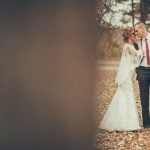Attending a Muslim wedding and not sure what to wear? When it comes to dressing for a Muslim wedding, there are certain guidelines and traditions to keep in mind. From traditional attire for women to dressing etiquette for men, understanding the dress code is essential to show respect and honor the couple on their special day.
In this article, we will explore the various aspects of dressing for a Muslim wedding, including traditional attire for women, modest dresses, hijab styles, dressing etiquette for men, choosing the right colors and fabrics, cultural considerations, as well as accessorizing with jewelry and footwear. Whether you’re a guest or part of the wedding party, these tips will help you navigate the dress code with confidence and grace.
From selecting the right length and sleeve style for modest dresses to styling your hair and accessories with hijab and headscarf styles, we’ll provide guidance on how to choose appropriate attire while respecting traditional customs and norms. So whether it’s your first time attending a Muslim wedding or you simply want to ensure that you’re dressed appropriately, read on for our final tips on dressing confidently for this joyous occasion.
Traditional Attire for Women
When attending a Muslim wedding, it is important to understand the traditional attire for women in order to dress appropriately and show respect for the customs and norms of the culture. Muslim women’s fashion varies greatly depending on the region and cultural practices, but there are some general guidelines that can help you navigate what to wear.
Abaya and Kaftan
In many Muslim cultures, women often wear an abaya or kaftan as their traditional attire for weddings. These long, flowing garments come in a variety of styles, colors, and designs. The abaya is typically worn with a headscarf or hijab to adhere to modesty standards, while the kaftan may be accessorized with a belt or sash.
Lehenga and Sari
In South Asian Muslim communities, the traditional attire for women at weddings may include a lehenga or sari. These vibrant and ornate outfits feature intricate embroidery, beading, and luxurious fabrics. It is important to choose styles that are modest in terms of neckline, sleeve length, and overall coverage.
Modest Dress Styles
For those who prefer a more Western style of dress, it is still possible to adhere to the modesty guidelines for Muslim weddings. Opt for dresses with longer hemlines, higher necklines, and sleeves that cover at least part of the upper arm. Flowy maxi dresses and A-line silhouettes can also be elegant choices while respecting traditional customs.
By understanding the different styles and designs of traditional attire for women at Muslim weddings, you can make an informed decision about what to wear. Whether you choose an abaya, kaftan, lehenga, sari, or a modest Western-style dress, it is essential to prioritize modesty and respect for the cultural traditions while feeling confident in your outfit choice.
Modest Dresses
When attending a Muslim wedding, it is important to dress modestly and respectfully. One key aspect of this is choosing the right length and sleeve style for your dress. Here are some tips on how to ensure your outfit is appropriate for the occasion:
- Length: When selecting a dress for a Muslim wedding, it is essential to choose one that is at least ankle-length. This means avoiding any dresses or skirts that fall above the knee. Maxi dresses and floor-length gowns are great options for achieving the appropriate length while still looking elegant and stylish.
- Sleeve Style: Opt for dresses with long sleeves or three-quarter length sleeves to maintain modesty at a Muslim wedding. It’s best to avoid sleeveless or strapless styles, as well as those with sheer or transparent material on the arms. If you have a favorite dress that doesn’t meet these requirements, consider layering it with a matching bolero or shawl for added coverage.
- Dress Silhouette: In addition to length and sleeve style, consider the overall silhouette of the dress. A-line, empire waist, and sheath dresses are popular choices for Muslim weddings as they offer a modest yet fashionable look.
Remember that dressing modestly does not mean sacrificing style or elegance. There are plenty of beautiful options available that adhere to the appropriate dress code for a Muslim wedding while allowing you to express your personal fashion sense.
Hijab and Headscarf Styles
When attending a Muslim wedding, it’s important to consider the hijab and headscarf styles that are appropriate for the occasion. For Muslim women, the hijab is an essential part of their traditional attire, and there are various ways to style it to complement your outfit for the wedding.
Choosing the Right Hijab Style
There are several different types of hijab styles to choose from, including the classic wrap-around style, the turban-style hijab, and the draped scarf style. When selecting a hijab style for a wedding, it’s important to consider the formality of the event and choose a style that complements your dress and overall look.
Accessorizing Your Hijab
When wearing a hijab to a Muslim wedding, you can also incorporate accessories to elevate your look. From decorative pins and brooches to stylish headbands or floral clips, there are countless options for adding flair to your hijab while still maintaining modesty.
Styling Your Hair
For those who prefer not to wear a hijab, styling your hair in an elegant manner is another option. Whether you choose to wear an updo or opt for loose curls, it’s important to ensure that your hairstyle aligns with the modesty requirements of the occasion.
Ultimately, when choosing a hijab or headscarf style for a Muslim wedding, it’s essential to prioritize modesty while also expressing personal style. By carefully considering different styles and accessories, you can create a polished and sophisticated look that is respectful of traditional customs while still allowing you to feel confident and beautiful on this special day.
Dressing Etiquette for Men
The dress code for men at a Muslim wedding is just as important as it is for women. While there may be more flexibility in the attire options for men, it’s still crucial to adhere to traditional and modest clothing choices. Typically, men can choose between wearing a Western-style suit or opting for traditional Middle Eastern attire like a thobe.
For those who prefer a Western look, a well-tailored suit in neutral tones such as navy, grey, or black is a safe and sophisticated choice. It’s important to pair the suit with a dress shirt and tie, and to ensure that the overall look is modest and respectful. Avoid flashy patterns or bright colors that may draw too much attention.
On the other hand, wearing a thobe is also a popular choice for men attending Muslim weddings. A thobe is a long robe typically worn in Middle Eastern countries and comes in various styles and designs. When choosing to wear a thobe, opt for classic colors such as white, cream, or light grey for an elegant and timeless look.
In terms of headwear, it’s customary for men to wear traditional Muslim caps known as kufis. These come in different colors and styles, so it’s best to choose one that complements your outfit while still adhering to the overall modesty required at such occasions.
| Attire Options | Recommended Colors |
|---|---|
| Western-style suit | Navy, Grey, Black |
| Thobe | White, Cream, Light Grey |
| Kufi (Headwear) | Various colors available |
Choosing the Right Colors and Fabrics
When it comes to attending a Muslim wedding, choosing the right colors and fabrics for your attire is crucial. Understanding the cultural significance and traditional norms associated with certain colors and fabrics is important in order to show respect and adhere to the dress code.
First and foremost, it is important to avoid wearing overly bright or flashy colors at a Muslim wedding. Opt for more subdued and elegant hues such as pastels, neutrals, or jewel tones. Avoid wearing all black, as it is typically associated with mourning in many Muslim cultures. Instead, consider incorporating black into your outfit through accessories or small accents.
In terms of fabrics, it’s best to choose conservative and modest materials that are not sheer or revealing. Fabrics like chiffon, silk, satin, and lace are popular choices for women’s dresses at Muslim weddings. For men, traditional fabrics like wool, linen, and cotton are recommended for suits or thobes. It’s important to avoid synthetic materials or anything that may be considered too flashy or attention-grabbing.
Embracing rich and luxurious fabrics like brocade, velvet, or embroidered textiles can add a touch of elegance to your outfit without being overly extravagant. Additionally, embracing traditional patterns such as paisley or floral motifs can also be a great way to pay homage to the cultural significance of certain designs while still looking stylish and appropriate for the occasion. When in doubt, opt for classic and timeless pieces that exude sophistication while adhering to modesty guidelines.
Ultimately, understanding the significance of colors and fabrics in Muslim culture is essential when choosing what to wear to a Muslim wedding. By paying attention to these details and making thoughtful choices when selecting your attire, you can ensure that you not only look appropriate but also show respect for the couple getting married and their cultural traditions.
Cultural Considerations
When attending a Muslim wedding, it’s important to understand and respect the traditional customs and norms of the culture. By doing so, you can show your appreciation for the traditions and create a positive experience for yourself and others at the event. Here are some cultural considerations to keep in mind:
1. Respect the modesty requirement: When choosing what to wear to a Muslim wedding, it’s important to dress modestly. For women, this means opting for outfits that cover the arms, legs, and neckline. Avoid wearing revealing or form-fitting clothing. Men should also dress modestly by wearing long-sleeved shirts and pants.
2. Familiarize yourself with Islamic customs: It’s helpful to have a basic understanding of Islamic customs and traditions before attending a Muslim wedding. This includes being aware of the significance of certain rituals such as the nikah (wedding contract) and Walima (wedding feast). Understanding these traditions will allow you to participate respectfully in the celebration.
3. Show cultural sensitivity: Be mindful of cultural differences and show respect for them. For example, it’s customary for guests to remove their shoes before entering a mosque or private home for a wedding ceremony. Additionally, be mindful of any dietary restrictions that may be observed during the wedding festivities.
By following these cultural considerations, you can ensure that you are respectful of traditional customs and norms when attending a Muslim wedding.
Accessorizing With Jewelry and Footwear
When attending a Muslim wedding, it is essential to accessorize appropriately to complement your outfit. For women, this means choosing modest and elegant pieces that do not draw attention away from the overall look. When selecting jewelry, opt for subtle pieces such as small earrings, delicate necklaces, and simple bracelets. Avoid anything too flashy or extravagant, as this may not align with the modesty expected at a Muslim wedding.
In terms of footwear, women should choose comfortable yet stylish shoes that match their outfit. Closed-toe heels or flats are often the best choice to maintain modesty and respect the religious atmosphere of the event. It’s important to consider that you may be required to remove your shoes before entering certain areas, so wearing shoes that are easy to slip on and off is advisable.
For men, accessorizing at a Muslim wedding is typically more limited than for women. However, they can still add an elegant touch to their attire with understated cufflinks, a classic watch, or a traditional headpiece such as an embroidered cap or turban. When it comes to footwear, men should stick to formal shoes that complement their outfit without being too flashy or casual.
Taking into account these dos and don’ts for accessorizing with jewelry and footwear will ensure you look respectful and polished while celebrating at a Muslim wedding.
| Do’s | Don’ts |
|---|---|
| Choose subtle jewelry like small earrings and delicate necklaces | Avoid flashy or extravagant jewelry |
| Select comfortable yet elegant footwear like closed-toe heels or formal shoes | Avoid wearing overly casual or attention-grabbing shoes |
| Add understated accessories like cufflinks or a classic watch | Avoid wearing excessive accessories that may distract from the overall look |
Final Tips for Dressing Appropriately and Feeling Confident at a Muslim Wedding
As you prepare to attend a Muslim wedding, it is important to remember that modesty and cultural sensitivity are key when choosing your attire. Whether you are a man or a woman, there are certain guidelines to keep in mind as you select your outfit for the special day. The goal is to dress respectfully while also feeling confident and comfortable.
When deciding what to wear to a Muslim wedding, it’s essential to consider the traditional dress code and customs of the community hosting the event. Remember that modesty is highly valued in Islamic culture, so opt for clothing that covers your shoulders, arms, and legs.
Women may choose from a variety of traditional styles such as abayas, kaftans, or saris, while men often wear suits or thobes. It’s important to avoid bright and flashy colors as well as fabrics that are too revealing or form-fitting.
Accessorizing with jewelry and footwear can add the finishing touches to your outfit for a Muslim wedding. For women, delicate accessories such as earrings, bracelets, and necklaces can complement your attire without being too flashy. Men may choose from understated cufflinks, watches, or headwear such as kufis or turbans. As you select your footwear, consider comfort as well as elegance-opt for closed-toe shoes for both men and women.
Finally, embrace the opportunity to celebrate with an open mind and respect for tradition at the Muslim wedding you will be attending. By choosing attire that reflects cultural sensitivity and modesty while still allowing you to express your personal style, you can feel confident throughout the event while honoring the customs of the occasion.
Keep these final tips in mind as you select your outfit and prepare to join in on this joyous celebration of love and commitment within the Muslim community.
Frequently Asked Questions
What Does a Non Muslim Wear to a Muslim Wedding?
A non-Muslim attending a Muslim wedding can wear modest and conservative clothing, such as a long dress or skirt with a blouse. It’s important to respect the cultural and religious customs by avoiding revealing or tight-fitting outfits.
What Does a Female Guest Wear to a Muslim Wedding?
Female guests at a Muslim wedding can opt for elegant and modest attire, such as a long-sleeved dress or a floor-length skirt with a beautiful blouse. It’s customary to cover the shoulders and avoid wearing anything too revealing.
Can Guests Wear Black to a Muslim Wedding?
Guests should generally avoid wearing black to a Muslim wedding, as it is traditionally associated with mourning in many Muslim cultures. Opting for vibrant and colorful attire is more appropriate for celebrating the joyous occasion of a wedding.

Welcome to my blog about home and family. This blog is a place where I will share my thoughts, ideas, and experiences related to these important topics. I am a stay-at-home mom with two young children. I hope you enjoy reading it! and may find some helpful tips and ideas that will make your home and family life even better!





